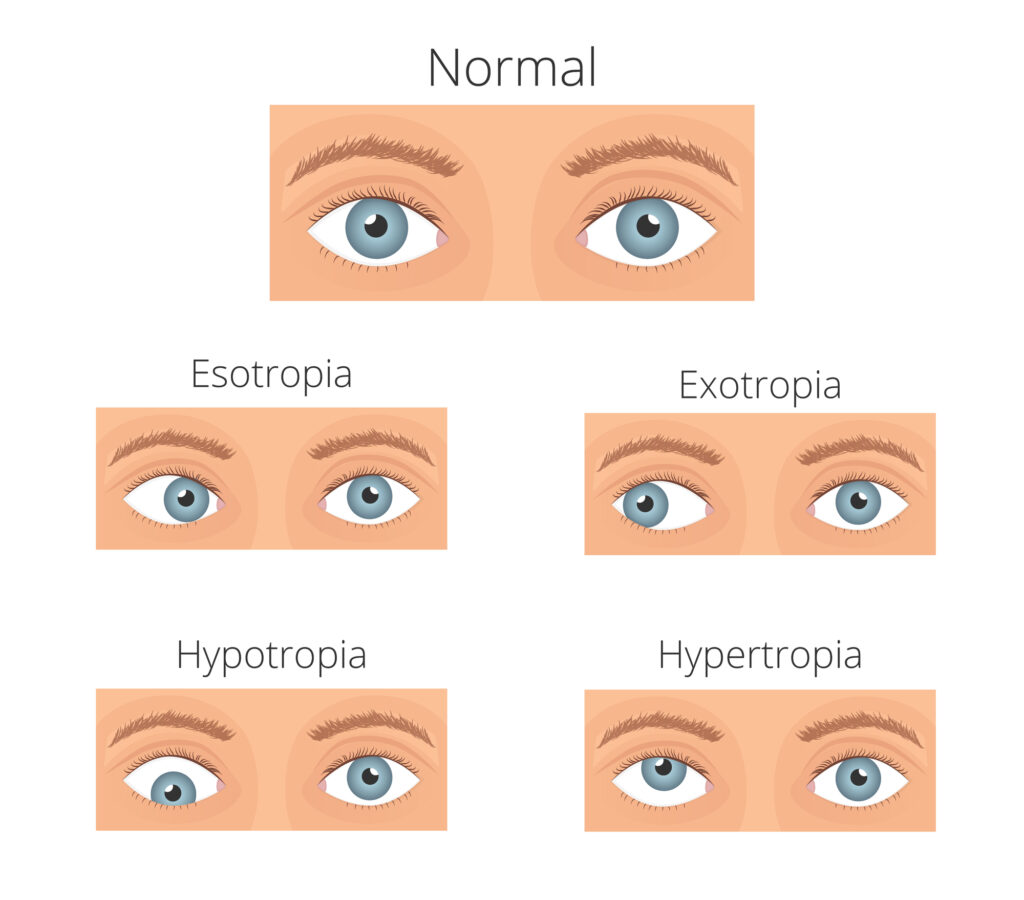What is Strabismus


Strabismus is the term for an eye condition in which the eyes are not directed in the same position as each other. It appears in various ways—one eye may be directed forward while the other is turned inward, outward, up, or down. In other words, the eyes do not work together as a pair.
Pediatric Strabismus
Proper eye alignment is essential for a child to develop good depth perception and to prevent poor vision in the eye that turns. When the eyes are oriented in two different directions they are sending different visual messages to the brain. In time, the brain may ignore the images from the misaligned eye to avoid double vision.
Visual/brain development usually continues until about the age of seven or eight and during this time if clear and similar images are not being sent to the brain, it will result in poor vision development in the misaligned eye.
Causes
- Family history: Children whose parents had strabismus are more likely to develop it.
- Refractive error: A significant amount of uncorrected farsightedness may develop strabismus.
- Medical conditions: Down syndrome, cerebral palsy, stroke, or head injuries put children at a higher risk for developing strabismus.
Adult Strabismus
When strabismus develops in adults, the brain has already developed itself into receiving visual stimuli from both eyes, so adults will have different symptoms, such as:
- Double-vision: Seeing two images of the same object.
- Visual confusion: Seeing two images superimposed onto each other.
- Image jumping: Images change from one field of view to the next as the brain focuses on one eye and then the other.
Adult Causes
- Childhood strabismus that was not corrected or has returned.
- A neurological condition
- Thyroid eye disease
- Diabetes
- Trauma
- Stroke
- Tumor
Treatments
There are several treatments for strabismus. In some cases, eyeglasses or contact lenses are the only treatment needed.
Prism lenses
For others, special prism lenses that are thicker on one side than the other may be needed. Prism lenses alter the direction of the light entering the eye and can reduce how much the eye must turn to view objects. Sometimes prism lenses can eliminate the eye turning.
Vision therapy
Vision therapy that trains the eye and brain to work more effectively together is also a treatment option. The therapy consists of specific eye exercises that can help with eye movement and focusing. These exercises are especially helpful when the eyes do not align properly for close-up vision, such as reading or computer work. The exercises can be done under the supervision of an eye care professional and continued at home.
Strabismus surgery
Eye muscle surgery for strabismus loosens or tightens one or more of the eye muscles to adjust the position of the eyes. The surgery is done on the extraocular muscles. There are seven extraocular muscles. Six of them control eye movement and the other muscle controls eyelid elevation.
Strabismus surgery is effective about 80-to-90% of the time; however, some patients may need multiple procedures to get optimal results.
If you would like to make an appointment, call us 609.877.2800 or EMail us.
Gregory Scimeca, M.D.
Ophthalmologist and Medical Director
The Eye Professionals
Our Locations
